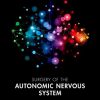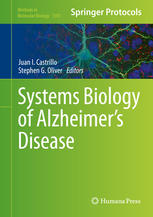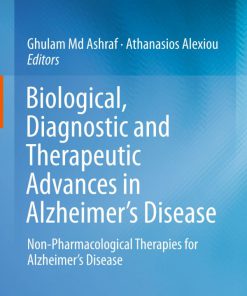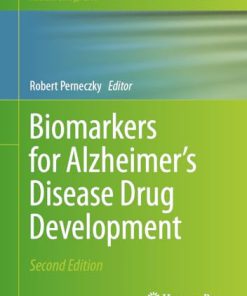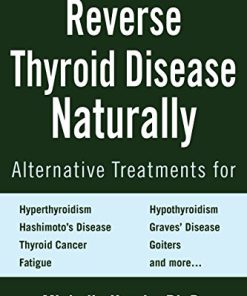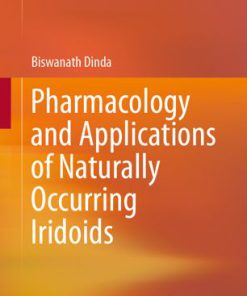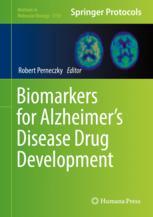Naturally Occurring Chemicals Against Alzheimer’s Disease 1st edition by Tarun Belwal, Seyed Mohammad Nabavi, Seyed Fazel Nabavi, Ahmad Reza Dehpour, Samira Shirooie ISBN 0128192135 9780128192139
$50.00 Original price was: $50.00.$25.00Current price is: $25.00.
Naturally Occurring Chemicals Against Alzheimer’s Disease 1st edition by Tarun Belwal, Seyed Mohammad Nabavi PhD, Seyed Fazel Nabavi, Ahmad Reza Dehpour, Samira Shirooie – Ebook PDF Instant Download/Delivery: 0128192135, 978-0128192139
Full dowload Naturally Occurring Chemicals Against Alzheimer’s Disease 1st Edition after payment

Product details:
ISBN 10: 0128192135
ISBN 13: 978-0128192139
Author: Tarun Belwal, Seyed Mohammad Nabavi PhD, Seyed Fazel Nabavi, Ahmad Reza Dehpour, Samira Shirooie
Naturally Occurring Chemicals against Alzheimer’s Disease offers a detailed discussion on the roles, molecular mechanisms, structural activity relationships, toxicology and clinical data on phytochemicals in relation to Alzheimer’s disease. The book examines the available phytochemicals and plants that are potentially effective, also determining the role and molecular targets of these phytochemicals in combating AD. This comprehensive resource will be helpful to researchers who are working on herbal drugs on AD, phytochemistry, pharmacology, toxicology, clinical trials, neuroscience and advancement in formulations.
- Provides information on phytochemistry, pharmacology, toxicology, clinical trials, and advancement in formulations specific to Alzheimer’s Disease in a single source
- Explores natural compounds, which can be more affordable to the majority of Alzheimer’s Disease patients, who will increasingly be in developing countries
- Covers a wide array of specific chemical compounds
Naturally Occurring Chemicals Against Alzheimer’s Disease 1st Table of contents:
Chapter 1. Introduction
- Introduction
Chapter 2. Alzheimer’s Disease: Ethanobotanical Studies
- Introduction
- Medicinal Plants Used Against Alzheimer’s Disease (AD)
- Gaps and Future Challenges
- Conclusions
- Phytochemicals/Plant Extracts Against Alzheimer’s Disease
Section 3.1. Phytochemicals (Pure Compounds)
Chapter 3.1.1. Resveratrol
- Introduction
- Sources
- Natural Sources
- Pharmacokinetics
- Chemistry
- Resveratrol in Alzheimer’s Disease
- Toxicology and Adverse Drug Reactions
- Clinical Trials
Chapter 3.1.2. Curcumin
- Introduction
- Alzheimer’s Disease: Symptoms and Pathophysiology
- Phytomedicinal Properties of Curcumin in Relation to Alzheimer’s Disease
- Role of Curcumin in Clinical Studies/Trials
- Impact of Curcumin on Alzheimer’s Disease
- Treatment of Alzheimer’s Disease
- Conclusion
Chapter 3.1.3. Omega-3 Polyunsaturated Fatty Acids (PUFAs)
- Introduction
- Alzheimer’s Disease
- Why Omega-3?
- Importance of Omega-3
- Clinical Trials
- Conclusion
Chapter 3.1.4. Galantamine
- Introduction
- Biological and Geographical Distribution
- In Vitro Production of Galantamine
- Chemistry
- Pharmacology
- Galantamine in Alzheimer’s Disease
- Toxicology and Adverse Drug Reactions
- Conclusion
Chapter 3.1.5. Rivastigmine
- Introduction
- Rivastigmine
- Available Dosage Forms of Rivastigmine
- Tolerability
- Conclusion
Chapter 3.1.6. Quercetin
- Introduction
- Quercetin and Its Pharmacological Properties
- Conclusion
Chapter 3.1.7. Valerenic and Acetoxyvalerenic Acid
- Introduction
- Occurrence
- Chemical Structure
- Pharmacological Potential of Valerenic Acid and Acetoxyvalerenic Acid
- Clinical Studies
- Conclusion
Chapter 3.1.8. Huperzine A
- Introduction
- Chemistry of Huperzine A
- Conclusions
Chapter 3.1.9. Caprylic/Capric Triglyceride
- Introduction
- Synthesis and Chemistry of Caprylic Triglyceride
- Properties of Capric Triglyceride
- Uses of Capric Triglyceride
- Alzheimer’s Disease and Capric Triglyceride-Based Medical Food
- Mechanism of Action and Biochemistry
- Case Studies Related to Caprylic Triglyceride-Based Treatment in Alzheimer’s Disease
- Precautionary Advice
- Conclusion
Chapter 3.1.10. Berberine
- Introduction
- Berberine and Its Pharmacological Properties
- Side Effects and Toxicological Profile of Berberine (BBR)
- Conclusion
Chapter 3.1.11. Hypericin and Pseudohypericin
- Introduction
- Description of Hypericum perforatum L.
- Bioactive Constituents
- Pharmacological Activities of HP
- Safety
- Conclusion
Chapter 3.1.12. Protopine
- Introduction
- Synthesis of Protopine
- Crystal Structure of Protopine Hydrochloride (Salt of Protopine)
- Biological Activities of Protopine
- Other Pharmacological Activity
- Antioxidant and Anticancer Activity
- Concluding Remarks
Chapter 3.1.13. Spinosin
- Introduction
- Causes and Mechanism of Alzheimer’s Disease
- Diagnosis of Alzheimer’s Disease
- Current Therapies for Alzheimer’s Disease
- Spinosin
- Potential of Spinosin Against Alzheimer’s Disease
- Future Directions and Conclusion
Chapter 3.1.14. Nobiletin
- Introduction
- Chemistry and Sources of Nobiletin
- Metabolism and Distribution in the Human Body
- Pharmacological Effects of Nobiletin in the Prevention and Treatment of AD
- Studies in Humans
- Conclusions
Section 3.2. Plants and Their Extracts
Chapter 3.2.1. Ginkgo biloba
- Introduction
- Alzheimer’s Disease
- Major Constituents of Ginkgo Biloba and Their Modes of Action
- Antioxidant Activity
- Protective Effects on Mitochondrial Function
- Antiapoptotic Effect
- Antiinflammatory Effect
- Preventive Effects on Amyloidogenesis and Aβ Aggregation
- Some Other Mechanisms
- Possible Mechanism of Actions
- Conclusion
Chapter 3.2.2. Panax Ginseng C.A. Meyer
- Introduction
- Taxonomy and Distribution
- Bioactive Constituents
- Mechanism of Action
- Pharmacological Studies
- Dosage
- Side Effects
- Conclusion and Recommendations
Chapter 3.2.3. Melissa officinalis (Lemon Balm)
- Introduction
- Taxonomy
- Cultivation
- Phytochemical Profile
- Traditional Uses and Pharmacology
- Treatment
- Mechanism of Action
- Safety
- Conclusion
Chapter 3.2.4. Bacopa monnieri (Brahmi)
- Introduction
- Taxonomical Classification of B. Monnieri
- Mechanism of Action of B. Monnieri in Alzheimer’s Disease (AD)
- Experiments on B. Monnieri Related to Alzheimer’s Disease (AD) Using In Vitro and In Vivo Methods
- Clinical Studies on B. Monnieri with Respect to Alzheimer’s Disease (AD)
- Adverse Effects Associated with B. Monnieri
- Conclusion
Chapter 3.2.5. Centella Asiatica
- Introduction
- Alzheimer’s Disease
- In Vitro and In Vivo Studies
- Clinical Studies
- Conclusion
Chapter 3.2.6. Rosmarinus officinalis L. (Rosemary)
- Introduction, Botanical Description, and Distribution
- Bioactive Compounds
- Rosemary–Drug Interactions
- Impact of Rosemary on Diseases of the Central Nervous System
- Side Effects
- Conclusion
Chapter 3.2.7. Valeriana officinalis (Valerian)
- Introduction
- Valeriana Officinalis and Alzheimer’s Disease
- Conclusion
Chapter 3.2.8. Matricaria recutita (Chamomile)
- Introduction
- M. Recutita L.
- Conclusion
Chapter 3.2.9. Galanthus nivalis L. (Snowdrop)
- Background
- Distribution and Habitat Associated with Galanthus Nivalis
- Botany of Galanthus Nivalis
- Phytochemistry and Structure–Activity Relationship
- Importance of Snowdrops in Neurodegenerative Disorders
- Clinical Studies on Galanthus Nivalis with Respect to Alzheimer’s Disease
- Conclusion
Chapter 3.2.10. Guggulu [Commiphora wightii (Arn.) Bhandari]
- Introduction
- Pathophysiology of Alzheimer’s Disease (AD)
- Antioxidants and Alzheimer’s Disease
- Guggulu (Commiphora Wightii)
- Chemistry
- Antioxidant and Anti-inflammatory Activity (Preclinical and Clinical Studies)
- Mechanism of Action
- Safety Issues
- Drug Interactions
- Conclusion
Chapter 3.2.11. Lepidium meyenii (Maca)
- Introduction
- Chemical Composition of Maca
- Mechanism of Action and Pharmacological Actions of Lepidium Meyenii
- Clinical Studies of Lepidium Meyenii
- Toxicity Profile of Lepidium Meyenii
- Conclusion
Chapter 3.2.12. Acorus calamus
- Introduction
- Phytochemical Investigation of Acorus Calamus L.
- Pharmacology of Acorus Calamus L.
- Cognitive Impairment
- Cholinergic System and Cognitive Impairment: Mechanism of Action
- Clinical Trials and Safety Issues Related to Acorus Calamus in AD
- Role of Acorus Calamus in AD
- Conclusion
Chapter 3.2.13. Tinospora cordifolia
- Plants and Their Extracts
Chapter 3.2.14. Magnolia officinalis
- Alzheimer’s Disease and Treatment Approaches
- **Magnolia Officinalis Re
People also search for Naturally Occurring Chemicals Against Alzheimer’s Disease 1st:
alzheimer’s disease chemical imbalance
what chemical causes alzheimer’s
there are some very well-known causes of alzheimer’s disease
natural history of alzheimer’s disease
is alzheimer’s an organic disorder
You may also like…
Uncategorized
Solutions to Jaan Kalda s Problems in Kinematics Qilin Xue Tarun Agarwal Kushal Thaman Ashmit Dutta
Engineering
Industrial Catalytic Processes for Fine and Specialty Chemicals 1st Edition Sunil S Joshi
Uncategorized
Biomarkers for Alzheimer s Disease Drug Development Methods in Molecular Biology 2785 Perneczky
Politics & Philosophy - Social Sciences
Young People s Understandings of Men s Violence Against Women Nancy Lombard 1134790678 9781134790678



